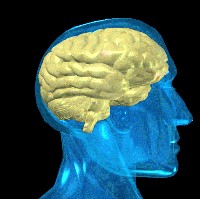16 April 2014. Parabon Computation in Reston, Virginia is creating a crowd-sourced computer network to provide the analytical power for two research studies on Alzheimer’s disease conducted in-house and with George Mason University in nearby Fairfax. The initiative, called Compute Against Alzheimer’s Disease, aims to tap into unused capacity of idle computers donated for this effort.
Compute Against Alzheimer’s Disease will support two research projects developing genetic diagnostics and simulations of chemical activity in the brain associated with the disorder. Ellen McRae, Parabon’s bioinformatics manager, is leading one study to identify genetic biomarkers that predict an individual’s risk of developing Alzheimer’s disease. McRae and colleagues will conduct in-depth analysis of data from the Alzheimer’s Disease Neuroimaging Initiative, an effort that detects and tracks Alzheimer’s disease in its earliest stages and tracks with biomarkers its progression over time.
The Parabon study aims to make stronger connections between genetic factors and risks of contracting Alzheimer’s disease. The findings are expected to offer earlier identification of people at all ages at risk of the disorder, which can encourage regular screenings and plan for changes in lifestyle and other environmental factors associated with Alzheimer’s disease.
The second research project is headed by Dmitri Klimov, a systems biologist at George Mason University. Klimov’s team is creating computer simulations of the effects of various peptides associated with the onset of Alzheimer’s disease on neurons, or brain cells. This research is looking into the damage that occurs when these peptides interact with the surface membranes of neurons, an undertaking that requires immense amounts of computing power. Understanding these interactions can help develop more effective therapies.
In December 2013, Parabon and Klimov were awarded a Small Business Technology Transfer grant from National Institute on Aging to develop new processes for simulations of molecular dynamics associated with Alzheimer’s disease, and write algorithms representing these dynamics to be offered as an online software service. The company earlier in 2013 received another small business research grant to develop software services supporting genetics research, this one with Dartmouth University.
To participate in Compute Against Alzheimer’s Disease, volunteers download a small application that activates when the computer is idle. Parabon then aggregates this volunteered capacity for the two research projects. The application also lets volunteers monitor the progress of the research projects for which their idle capacity is being used. The software runs on Windows, Mac OS, and Linux systems.
Read more:
- UC-San Francisco Launches Brain Disease Trial Registry
- Daiichi Sankyo, UCSF Partner on Neurodegenerative Disorders
- NIH, Pharmas, Non-Profits Partner on Molecular Drug Targets
- US, Europe Regulators Give Alzheimer’s Model Positive Marks
- Merck, Luminex Partner on Alzheimer’s Screening Device
* * *


 RSS - Posts
RSS - Posts
You must be logged in to post a comment.